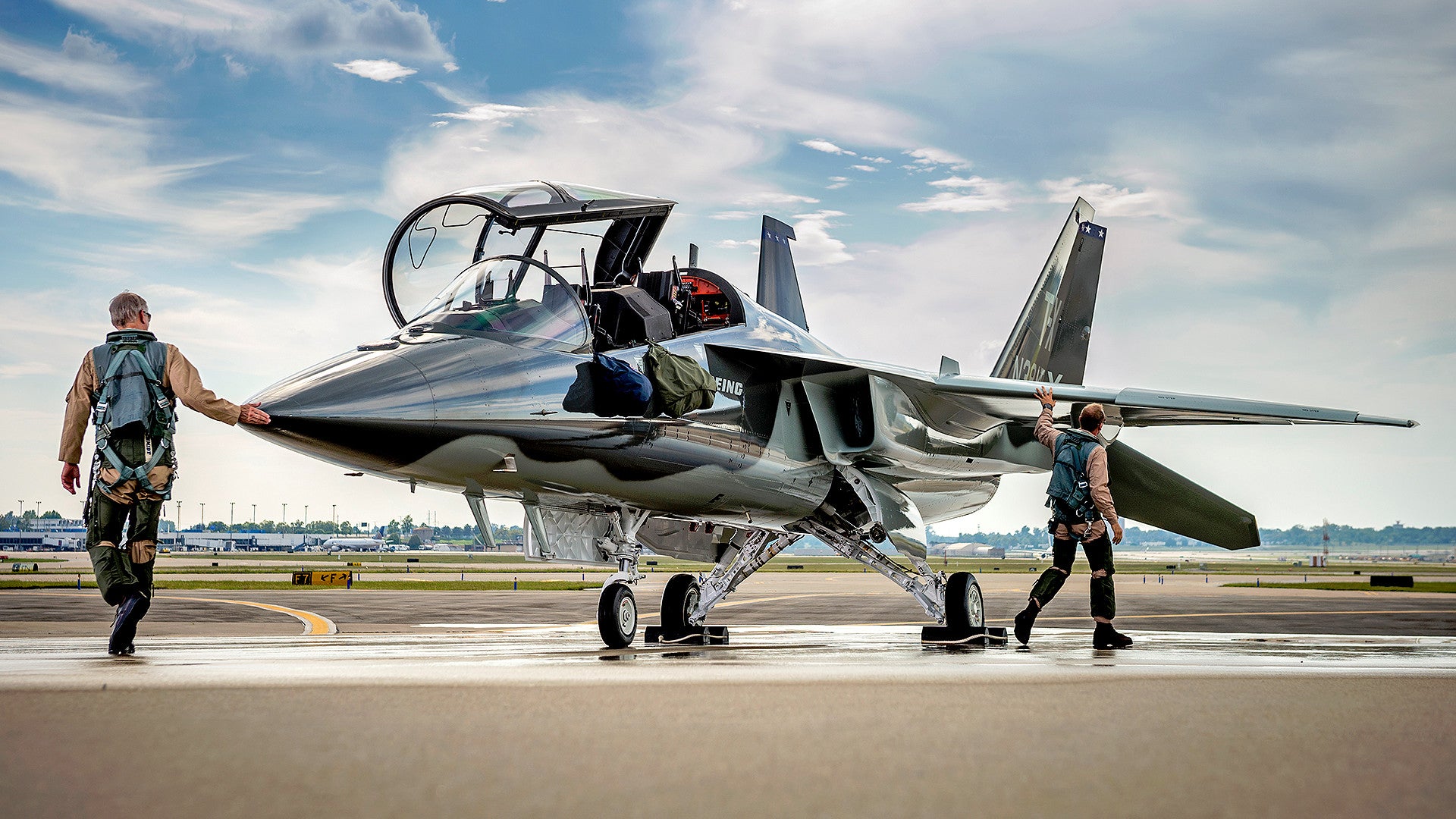The U.S. Air Force has awarded the multi-billion dollar contract to build the much-hyped T-X jet trainer to Boeing. After a string of disappointments in recent years, just since August 2018, the Chicago-headquartered planemaker has now grabbed three major U.S. military aviation deals, with the other two being the contract to replace the Air Force’s UH-1N helicopters and a deal with the U.S. Navy to build their MQ-25A Stingray tanker drones.
Reuters was first to report the deal, valued at approximately $9.2 billion, on Sept. 26, 2018, which Boeing later confirmed in a press release. The Air Force plans to purchase more than 350 new T-X aircraft to replace its T-38 Talon fleet, as well as nearly 50 training simulators, and other support equipment and services. Boeing was the only contender to submit a clean-sheet design, which it developed in cooperation with Sweden’s Saab. The two partners beat out a bid from Lockheed Martin and South Korea’s Korea Aerospace Industries (KAI), who had jointly submitted a version of the T-50 jet trainer, as well as an offer from Italy’s Leonardo, who pitched a variant of their M346 design known as the T-100.
Boeing’s press release reads in full:
“Today’s announcement is the culmination of years of unwavering focus by the Boeing and Saab team,” said Leanne Caret, president and CEO, Boeing Defense, Space & Security. “It is a direct result of our joint investment in developing a system centered on the unique requirements of the U.S. Air Force. We expect T-X to be a franchise program for much of this century.”
Boeing and its risk-sharing partner Saab designed, developed, and flight tested two all-new, purpose-built jets ― proving out the system’s design, repeatability in manufacturing and training capability.
“This selection allows our two companies to deliver on a commitment we jointly made nearly five years ago,” said Håkan Buskhe, president and CEO of Saab. “It is a major accomplishment for our partnership with Boeing and our joint team, and I look forward to delivering the first trainer aircraft to the Air Force.”
Boeing is now clear to begin placing orders with its suppliers, including Saab. More than 90 percent of Boeing’s offering will be made in America, supporting more than 17,000 jobs in 34 states.
Saab serves the global market with world-leading products, services and solutions within military defense and civil security. Saab has operations and employees on all continents around the world. Through innovative, collaborative and pragmatic thinking, Saab develops, adopts and improves new technology to meet customers’ changing needs.
The Air Force’s original request for proposals said the winner of the competition would have to submit five aircraft for testing, after which it would make a decision about whether to proceed with two lots of low-rate initial production aircraft. It would then move on to at least eight lots of full-rate production aircraft. The service hopes to reach initial operational capability with the T-X in 2024.
The Air Force’s contract is a big deal by itself, but it might also spur further developments and sales of the T-X, or derivatives, abroad. Saab had previously said that if the design it crafted with Boeing won the competition that it would build a U.S.-based plant to build the aircraft.

The size of the deal with the Air Force could attract U.S. allies and partners who are looking at buying new jet trainers themselves. Joining the larger American program would allow them to avoid much, if not all, of the cost of developing a new aircraft and to take advantage of the economies of scale from larger orders of the final production aircraft. The design might serve as the basis for future, combat-capable derivatives, as well, that could be of interest to smaller air forces.
The USAF has long been interested in using the T-X for aggressor duties in the future. There is also a possibility that private contractors who provide “red air” aggressor support to U.S. military training exercises could be interested in acquiring the T-Xs, as well. The Air Force is presently running a separate and potentially lucrative competition to hire a contractor these types of services at a dozen locations or more. The service’s requirements call for jets that can mimic fourth generation combat jets and most of the competitors have been acquiring older types and refurbishing them to meet that demand. Boeing’s T-X could potentially offer a modern alternative with a big support infrastructure available to sustain it.
Given how significant the contract could be, it’s important to remember that Lockheed Martin and KAI and Leonardo could decide to protest the award if they think they can make a case that the Air Force’s contracting process was flawed or unfair in any way. This would also potentially delay the program, even if federal watchdogs rule in favor of Boeing at the end of the day.
But if everything moves ahead smoothly, Boeing and Saab could be looking a very significant future with their new jet trainer design.
You can find our follow-up with more specifics about the T-X contract award here.
Contact the author: Tyler@thedrive.com
